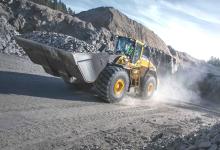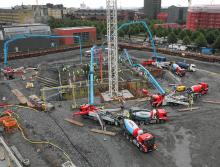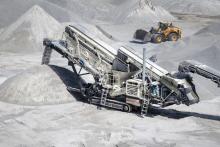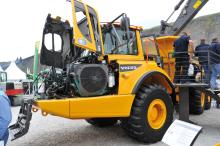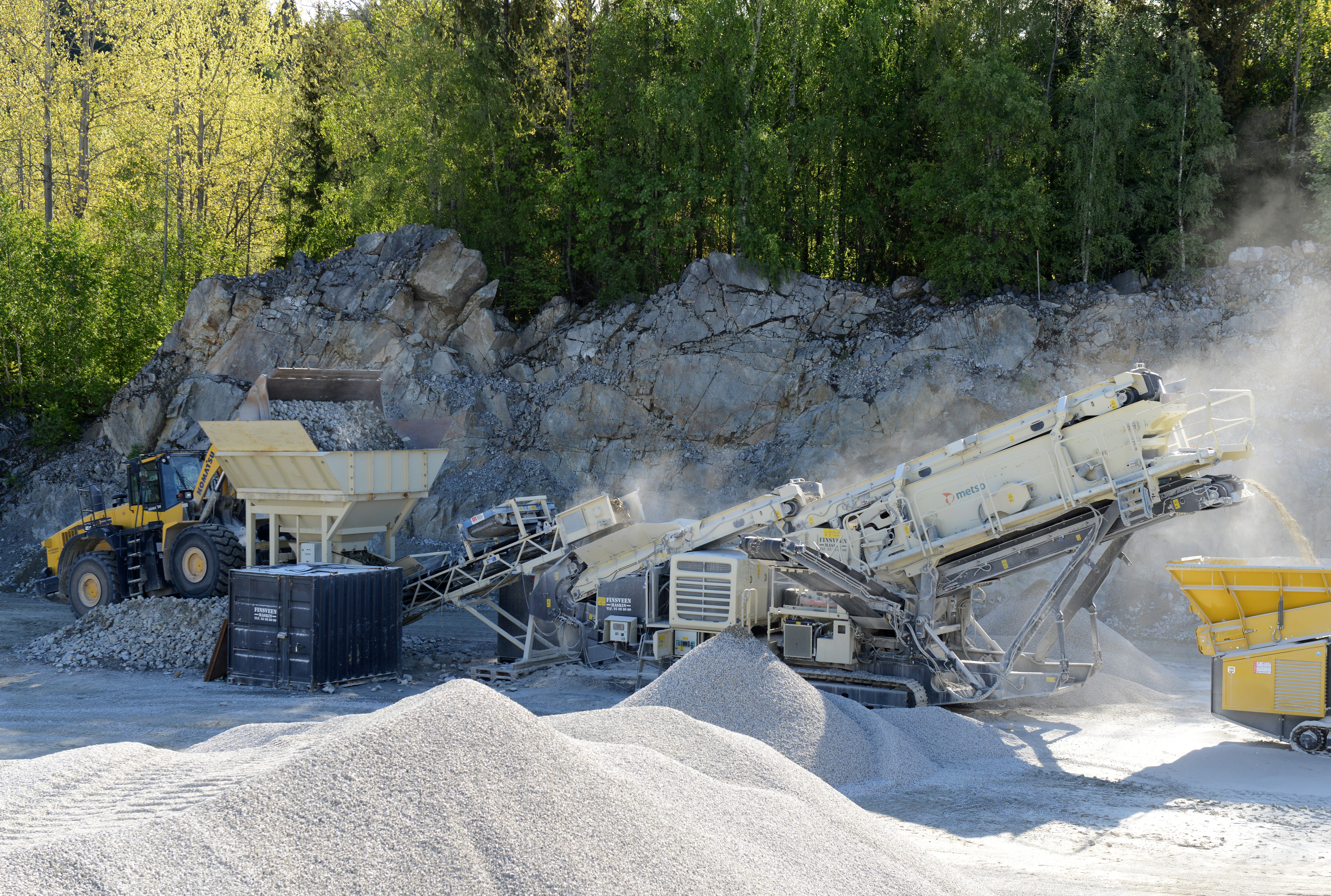
Quarrying and mining are major industries in Scandinavia where they employ thousands of people, both directly and in supply businesses.
The weather in this region means that operations often have to be carried out during warmer parts of the year with materials such as aggregates being stockpiled for use as required.
And according to a recent interim outlook report from Finnish construction company
It says that in Norway, Sweden and Denmark, multi-year, state-funded traffic infrastructure development programmes are currently underway.
These countries are also investing in the development and renewal of energy production. Large-scale road and railway projects are being planned around urban growth centres, which will increase demand for infrastructure construction especially in Sweden.
It also points out that in Finland, the total volume of construction is expected to decline by approximately 1% in 2015, but to increase slightly in 2016.
However, investments planned by the Finnish government in basic road maintenance will lead to increased demand, particularly for paving, in the next few years.
“In Scandinavia, the demand for infrastructure construction will be increased by multi-year national investment programmes as well as needs for renewing energy production. The competition for infra projects is intense especially in Sweden and Norway,” says the report.
All this bodes well for the aggregates industry and its suppliers who provide equipment such as crushers, screens, drill rigs, hauling trucks and loading shovels.
For example,
Mobile equipment, including crushers, screeners, drilling rigs and tunnelling jumbos, are currently favoured.
“This type of equipment enables contractors and companies to use the equipment where it is needed, when it is needed. The flexibility to be able to move equipment from project to project enables a far higher return on investment. As Sandvik Construction is able to support the equipment wherever it operates, this means that our customers benefit to a greater extent.”
The company says its new DINO drill rig is proving to be especially useful on housing projects as it is able to get to exactly where it is needed. Additionally the Ranger series is not handicapped by the snow or ice, an important consideration especially in Scandinavia.
Sandvik says that demand for equipment is being driven by the number of large infrastructure projects (roads, housing and tunnels), with an increase in demand especially for crushers and screens.
“These projects require asphalt fractions as well as concrete ballast. It is not just crushers and screens however: drill rigs and breakers are also needed in quarrying operations as well as on site.
“Due to the reasons stated above the signs are that 2016 will be positive. Obviously we are all affected by the global economy but due to the investment by the Norwegians and the Swedes we feel that this will drive demand for our products and services.”
The biggest producer of mineral resources in the region is Norway where 96 million tonnes was extracted in 2014, representing a total value of NOK 12.9 billion (€1.5 billion), including gravel and hard rock aggregate for the building industry (NOK 5.7 billion) and natural stone (NOK 1.032 billion).
Indeed, the Norwegian Mineral Industry (Norwegian Berg Industri) got its first mineral strategy in March 2013 when the government defined the industry as a focal area.
The organisation was founded in 2008 when the three industry associations, The Association of Norwegian Mines (BIL); The Federation of Norwegian Stone Industry (SIL), and the Norwegian Aggregates Producers Association (PGL), merged to promote members’ interests,
With many of its operations in coastal regions, the industry, which has over 950 companies employing nearly 6,000 people at over 1,100 quarries/mines, exports some 7 billion NOK (€824 million), 54% of its overall turnover.
In Sweden, the total deliveries of construction aggregates in 2014 increased by 600,000tonnes to 77 million tonnes, compared to the previous year, and according to the
In 2014, there were 1,376 quarries in Sweden that were primarily intended for aggregate production and they had an average production of about 56,000tonnes each. In 2000, there were 3,440 licensed quarries that delivered on average 19,238tonnes each.
The use of aggregates for road construction increased in 2014 to 43.4 million tonnes from 42.4 million tonnes in 2013.
The SGU has been given the task to work for one of the government’s environmental objectives: good quality groundwater.
Preservation of natural deposits of importance for extraction of drinking water, geothermal storage or the natural and cultural landscape, is one of the tasks related to the environmental objective.
“Two ways of contributing to increased resource efficiency and a sustainable supply of aggregates is to develop a sustainable construction aggregates management planning and to make better use of leftover crushed rock from [places such as] infrastructure construction sites,” says SGU.
“Therefore, SGU has been given the task to support the county administration boards with basic data for a sustainable construction aggregates management plan and to propose a method for reporting production from mobile crushers along with the production from licensed quarries.”
Indeed, Norwegian contractor Finsveen Maskin, which is using one of
“We move our LT220D between sites about 25 times per year,” says Runar Finsveen, manager of Finsveen Maskin.
“And, as a big added bonus, the LT220D, weighing only 48tonnes, can be transported easily as one piece: no dismantling necessary. Metso has succeeded in reducing the weight of the new unit by about ten tonnes compared to the old model.”
The company operates in a manner commonly practised in Norway: a dump truck feeds a static hopper silo from which a conveyor moves the material up to the LT220D’s belt feeder for processing.
Meanwhile, Rickard Persson, CEO of BePe,
Claus Benzin, CEO of Aksel Benzin, Powerscreen’s Denmark dealer, says: “Denmark, like Sweden, has a good, strong economy and customers are optimistic. They are still buying machines. There are also some big infrastructure projects in and around Copenhagen, such as the expansion of the city’s Metro, and the Nordhavn Tunnel, which is potentially really good for equipment sales.”
At Volvo Construction Equipment, David Alström, business director for Hub North,
“We believe that the Swedish market will continue to increase and that the Norwegian market may plateau on a high level if the oil crisis does not affect investments too much. In Denmark the giant Fehrmarn Belt project [a proposed fixed link to connect the German island of Fehmarn with the Danish island of Lolland] is a dark horse but the real start of the project is still not set.
“There are some distinct differences between the markets in Scandinavia, which are reflected in the different geological conditions. Norway is almost exclusively hard rock quarrying, while Denmark is all sand and gravel. Sweden is a bit of both.”
Alström says that Volvo CE has traditionally performed very well and continues to perform well in the aggregates sector in Scandinavia, attributing this to high-quality products that are well suited for customers’ needs, as well as a strong dealer network.
“Our dealers provide excellent service support for high machine uptime and special adaption of the machines when needed.
“Nearly all of the products relevant for the aggregates industry have now been launched as Stage IV models. This includes wheeled loaders (L60-L250H), articulated haulers (A25-A40G) and excavators (EC140-EC480E).
“Our most popular models among customers in the Scandinavian aggregates industry are the Volvo L150H-L180H wheeled loaders.”

